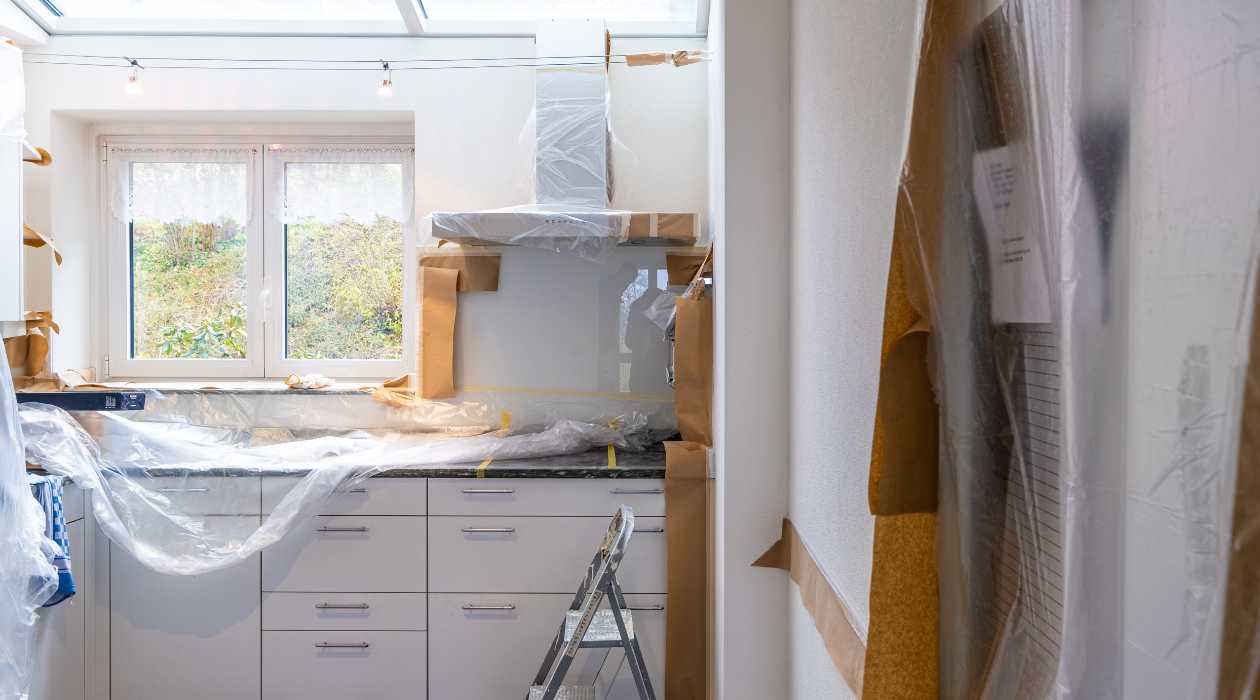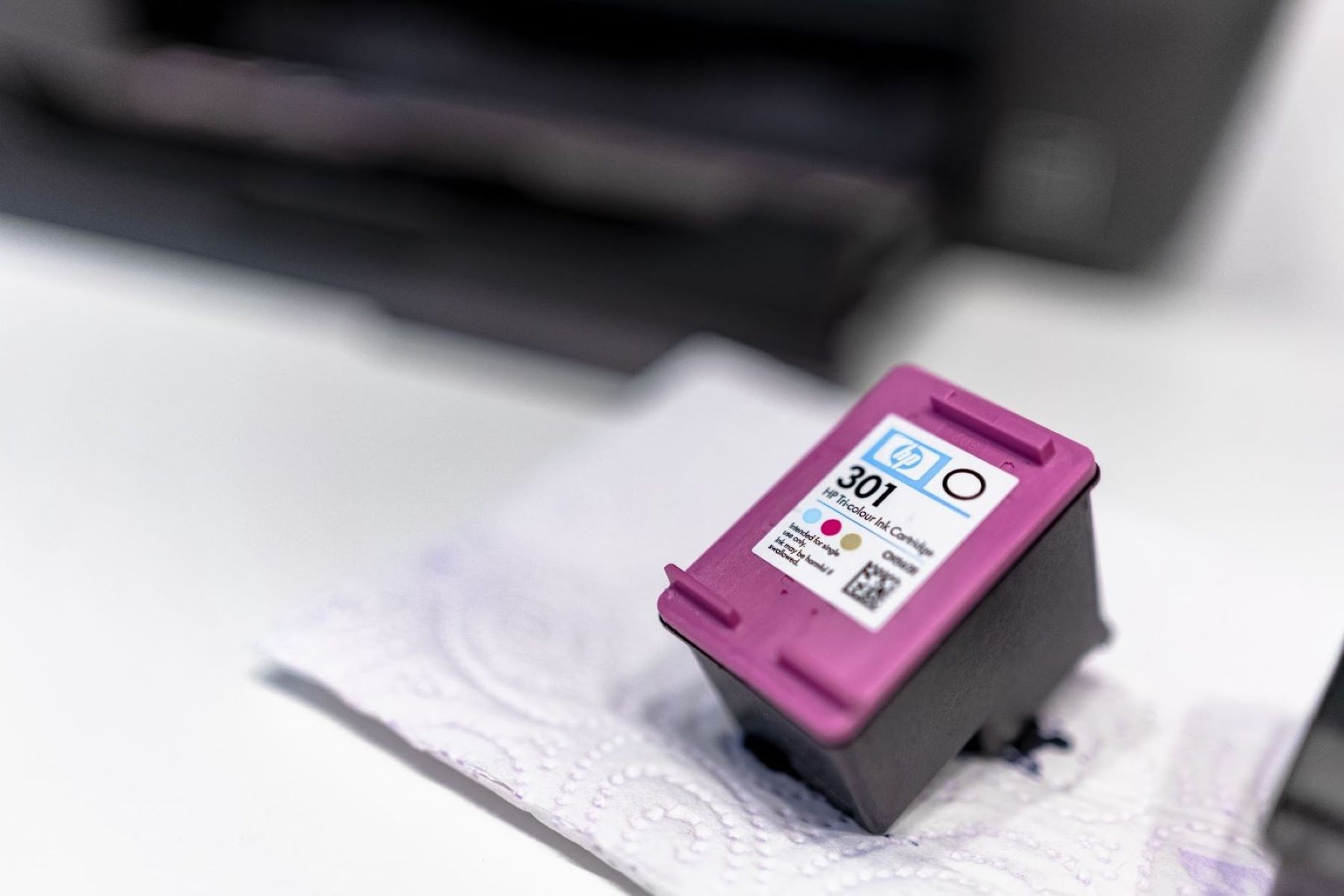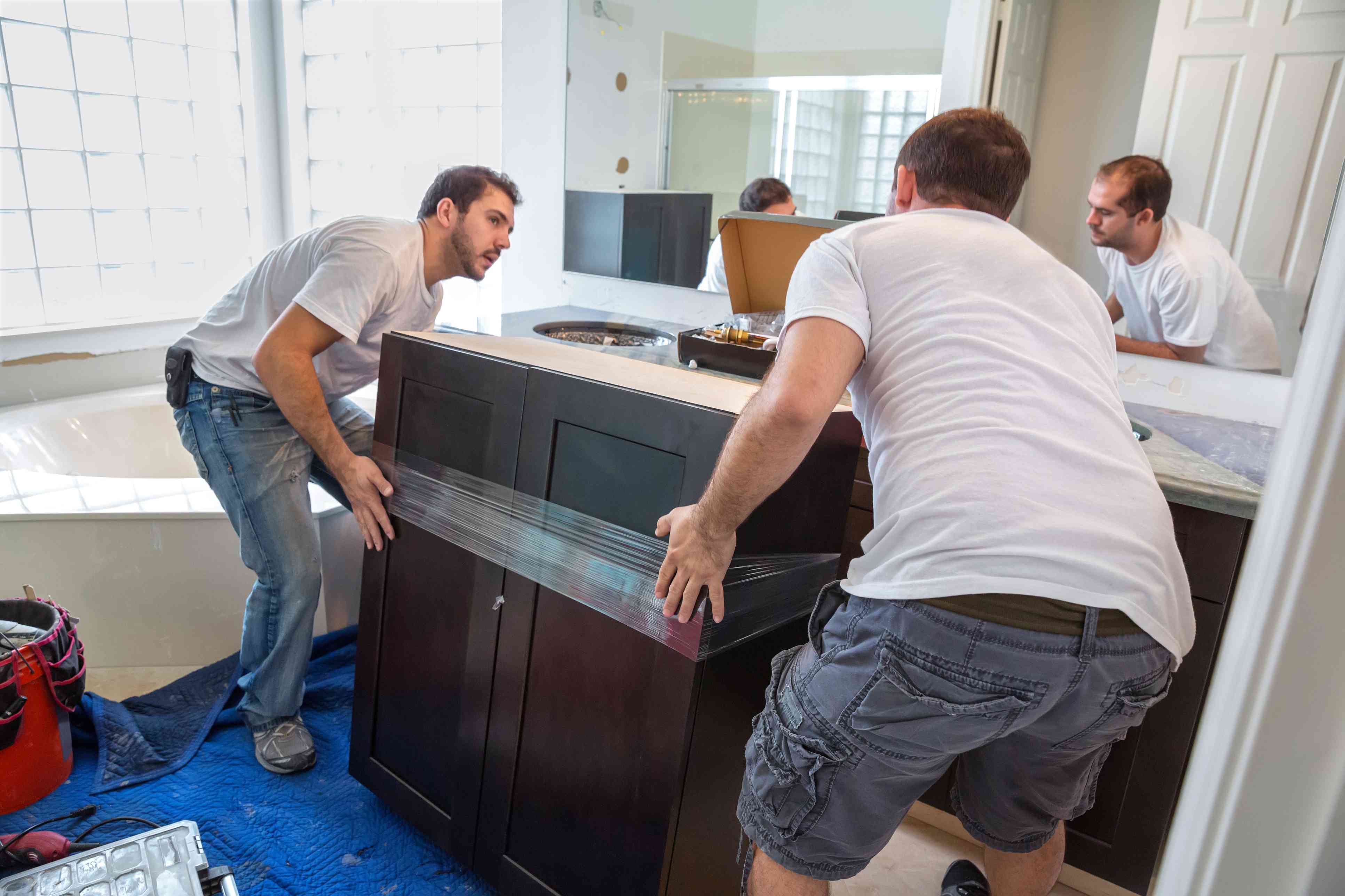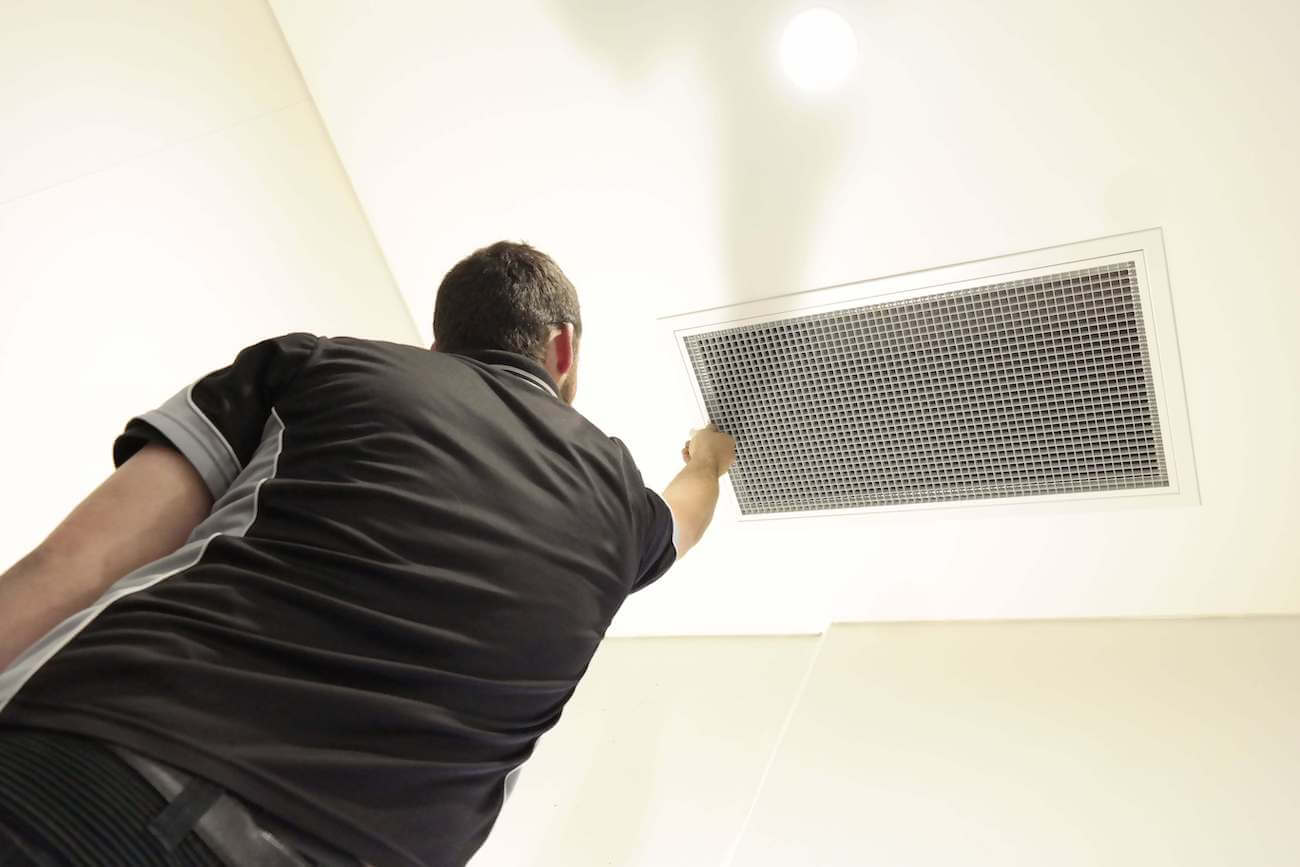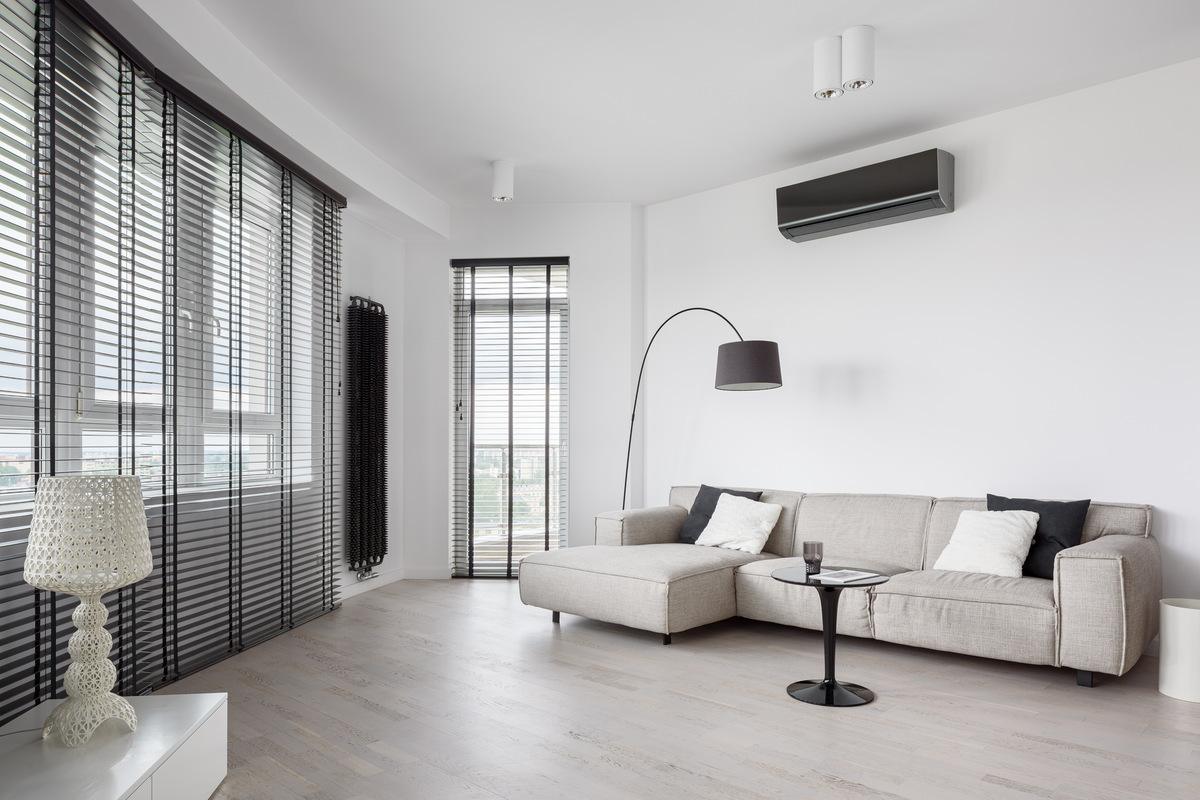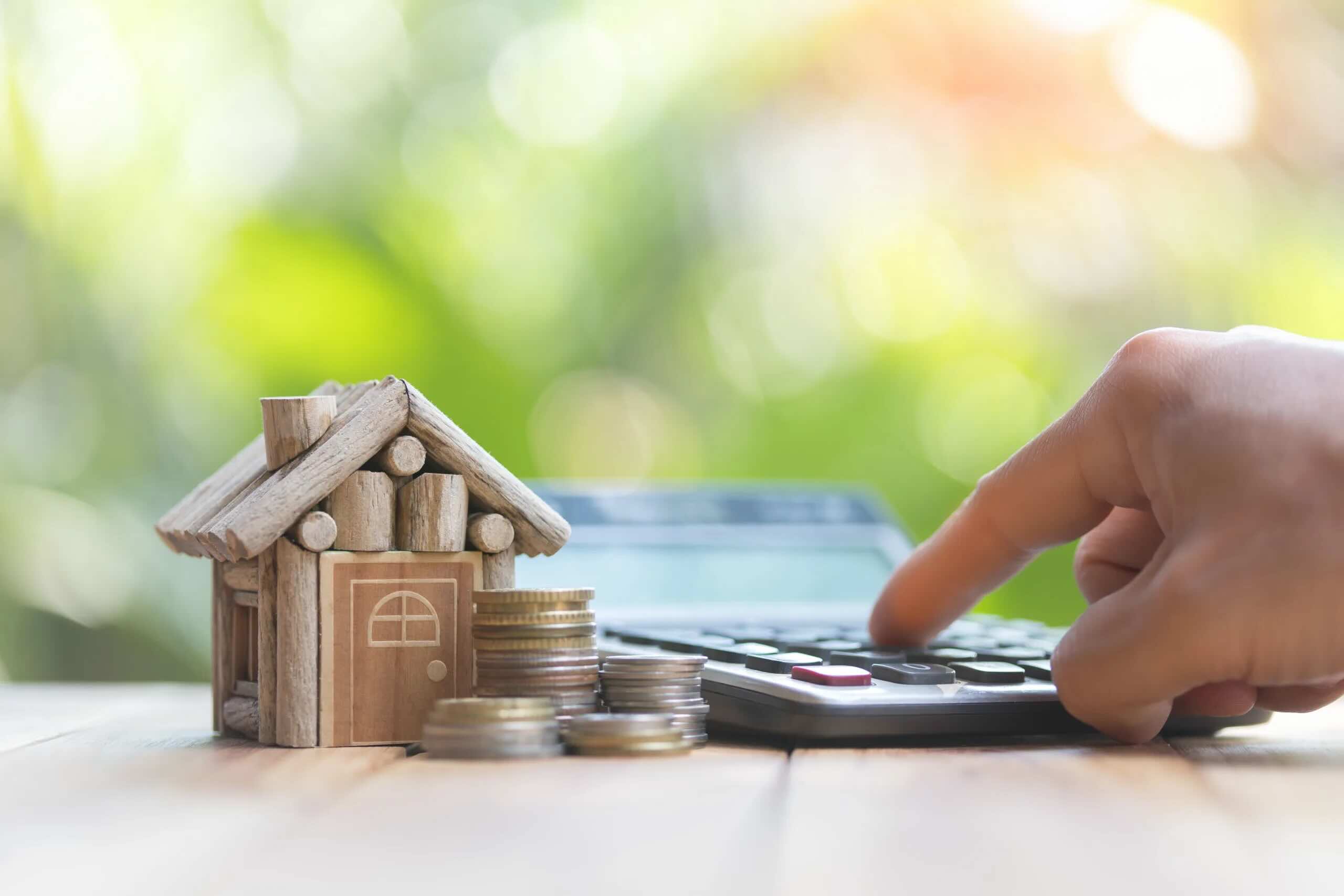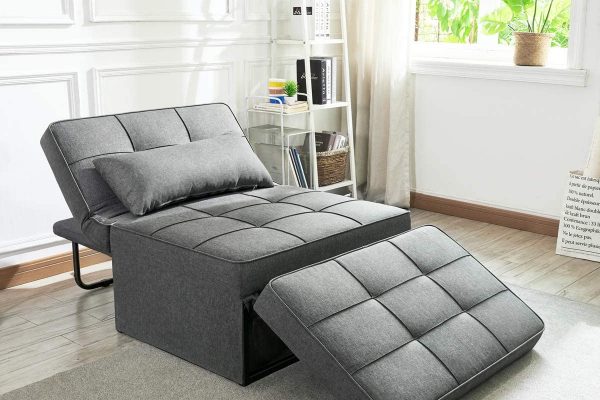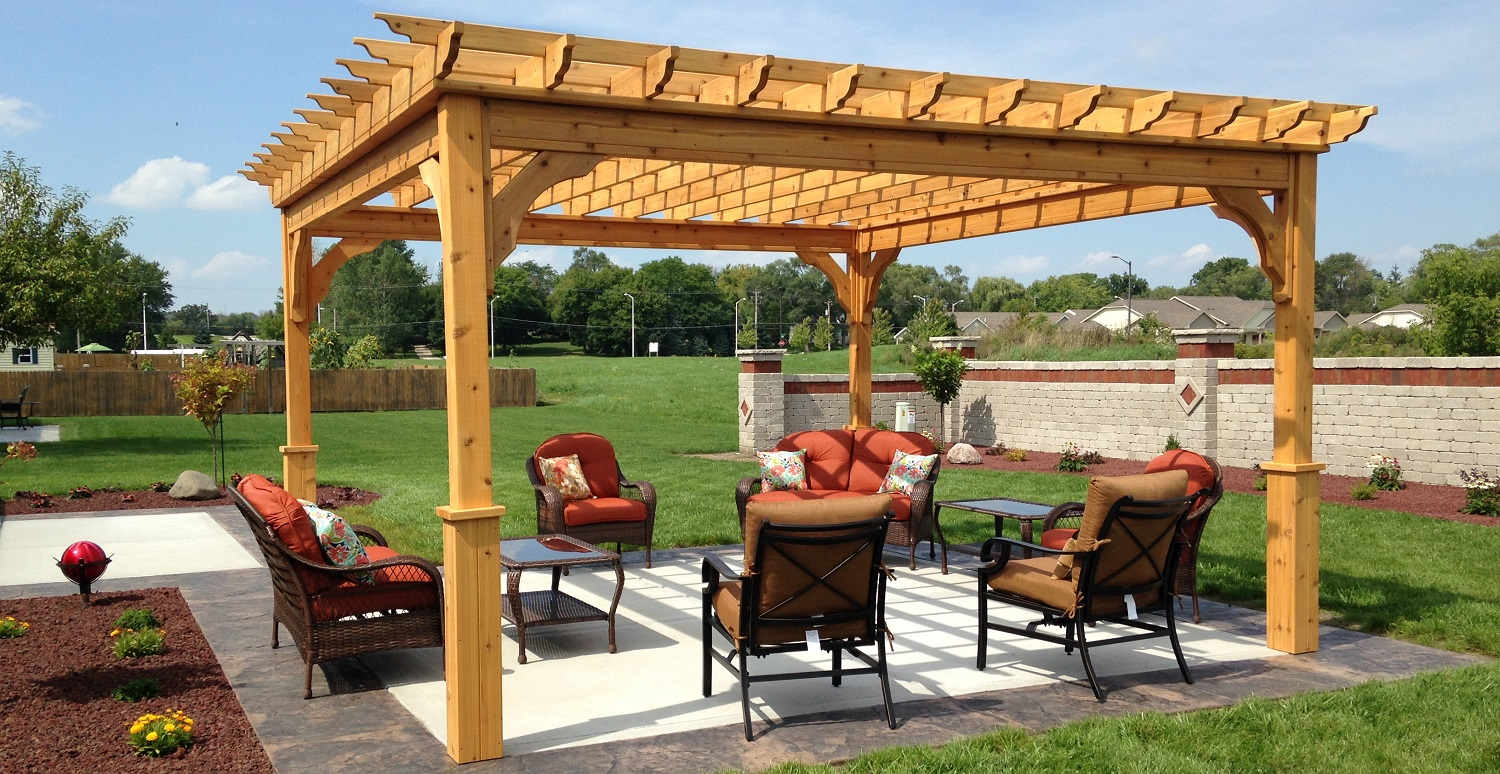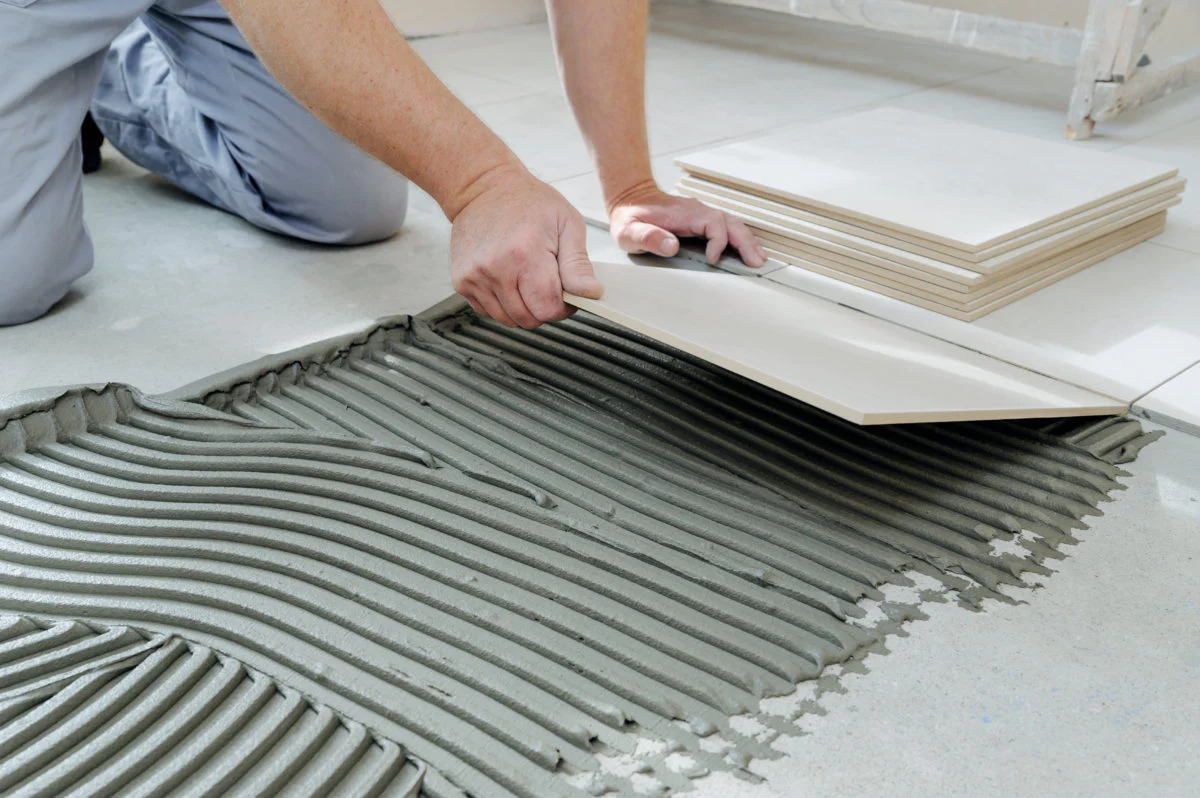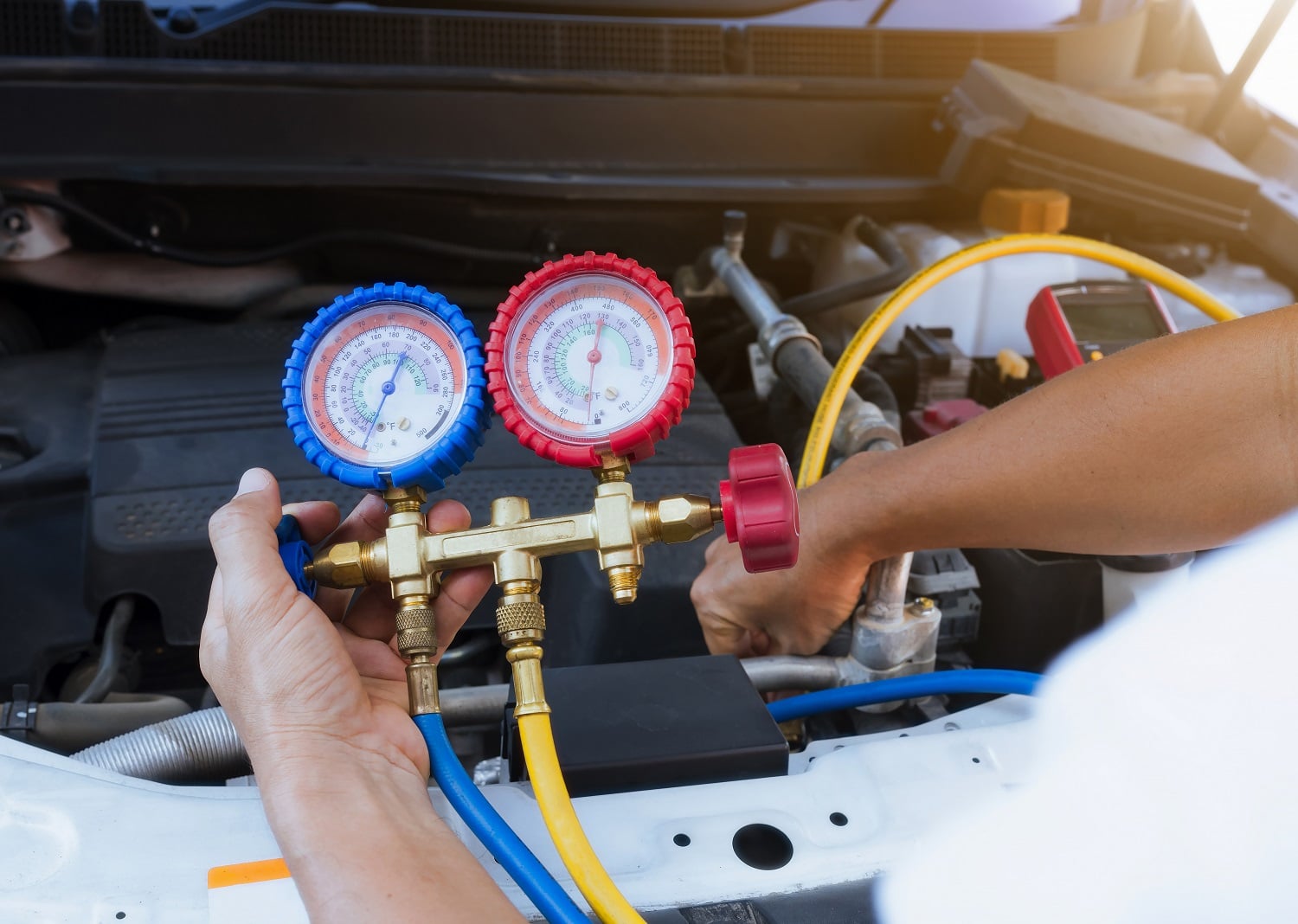Home>Home Maintenance>How To Save Money On Air Conditioning Costs
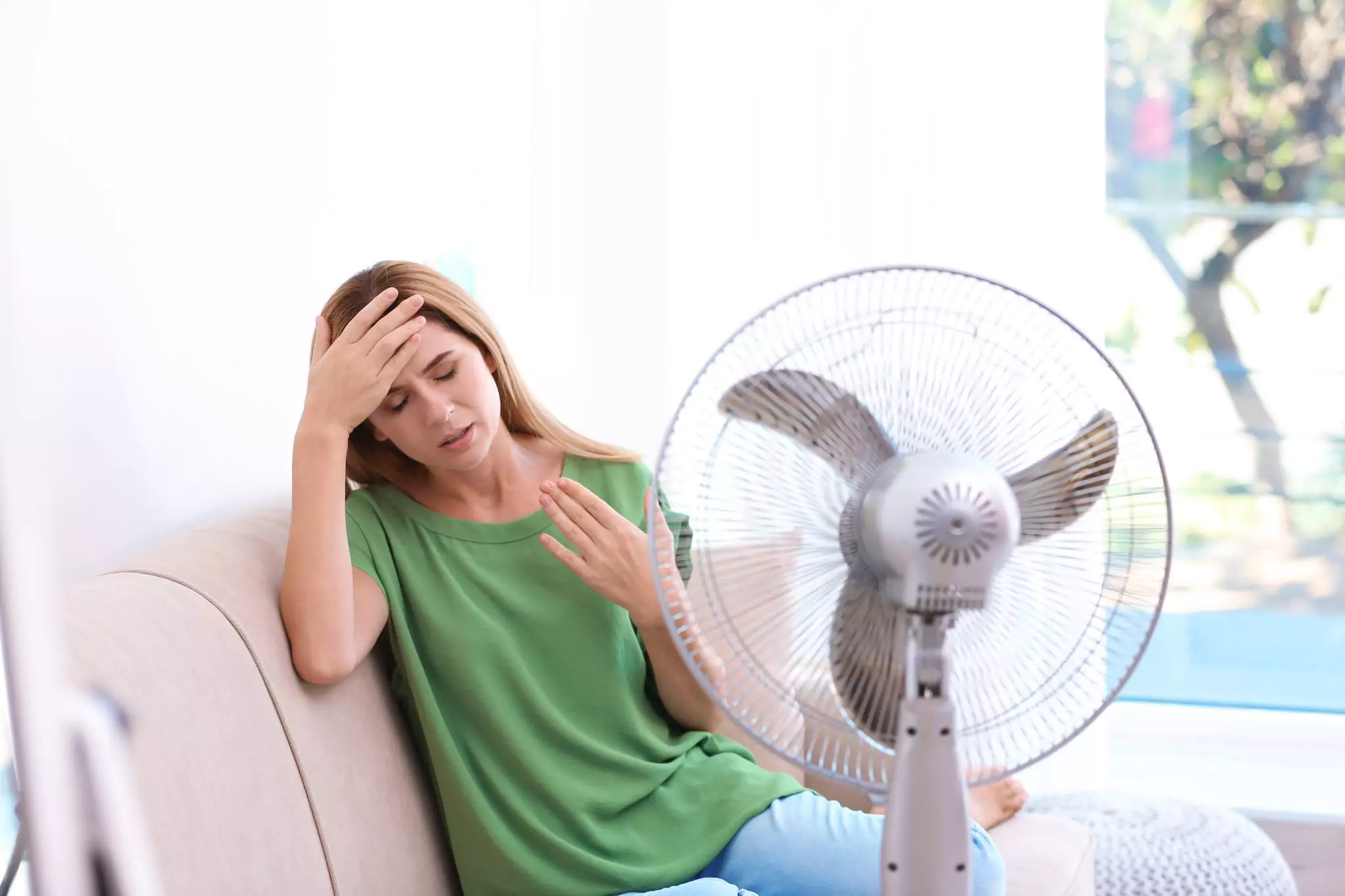

Home Maintenance
How To Save Money On Air Conditioning Costs
Modified: March 6, 2024
Learn effective home maintenance tips to save money on air conditioning costs. Implement these strategies to reduce energy consumption and lower your monthly bills.
(Many of the links in this article redirect to a specific reviewed product. Your purchase of these products through affiliate links helps to generate commission for Storables.com, at no extra cost. Learn more)
Introduction
Maintaining a comfortable and cool indoor environment is crucial, especially during the hot summer months. However, running your air conditioning system all day can significantly increase your energy costs. The good news is that there are several ways to save money on air conditioning costs without sacrificing your comfort.
In this article, we will explore practical tips and strategies to help you reduce your air conditioning expenses. Whether you live in a hot and dry climate or a humid and muggy region, these suggestions can help you keep your home cool while keeping your wallet happy.
By implementing these cost-saving measures, you can not only reduce your ecological footprint but also enjoy substantial savings on your energy bills. So, let’s dive in and discover the secrets to saving money on air conditioning costs.
Key Takeaways:
- Set your thermostat a few degrees higher when you’re away or asleep to save on air conditioning costs. Use ceiling fans and natural ventilation to stay cool without breaking the bank.
- Keep windows and doors sealed, use window coverings, and maintain your AC system to reduce energy usage and lower air conditioning costs. Take advantage of off-peak hours for cost-effective cooling.
Read more: How To Save Money With Forced Air Heating
Understanding Air Conditioning Costs
Before we delve into ways to save money on air conditioning costs, it’s essential to understand what factors contribute to these expenses. By gaining insight into how your air conditioning system operates and the factors that impact its efficiency, you can make informed decisions to minimize your costs.
One crucial factor to consider is the size of your home. The size of your living space determines the capacity and output required from your air conditioning system. If your unit is too small for your home, it may struggle to cool the space adequately and work harder, leading to increased energy consumption. On the other hand, an oversized unit can cycle on and off frequently, wasting energy and driving up your bills.
Another factor that affects air conditioning costs is the outdoor temperature. The hotter the weather, the harder your air conditioner needs to work to maintain a comfortable indoor temperature. Consequently, your energy consumption and costs will increase during heatwaves or exceptionally hot days.
Additionally, the energy efficiency of your air conditioning system plays a significant role in your overall costs. Older models tend to be less energy-efficient compared to newer, more advanced units. If your system is outdated, it may consume more electricity to cool your home, resulting in higher energy bills.
Lastly, the frequency and duration of air conditioning use impact your costs. If you constantly keep your system running or have it on for extended periods, your energy consumption will rise. Finding ways to reduce the time your air conditioner is operational can have a significant impact on your energy bills.
Now that we have a better understanding of the factors that contribute to air conditioning costs, let’s explore some practical tips to help you save money and still enjoy a cool and comfortable home.
Tips for Reducing Air Conditioning Costs
1. Set Your Thermostat Properly: One of the most effective ways to save on air conditioning costs is to adjust your thermostat settings. During the summer months, set your thermostat to a higher temperature when you’re away from home or asleep. Aim for a comfortable temperature instead of a chilly one, as every degree you raise the thermostat can result in noticeable savings.
2. Use Ceiling Fans: Ceiling fans can help circulate cool air throughout a room, allowing you to raise the thermostat while still feeling comfortable. Make sure your ceiling fans are rotating counterclockwise during the summer to create a cooling breeze.
3. Keep Windows and Doors Sealed: Properly sealing windows and doors can prevent cool air from escaping and hot air from entering your home. Check for drafts and use weatherstripping or caulking to seal any gaps.
4. Utilize Window Coverings: Use window coverings such as blinds, curtains, or shades to block out direct sunlight during the hottest hours of the day. This can significantly reduce the amount of heat that enters your home, allowing your air conditioner to work more efficiently.
5. Maintain Your Air Conditioning System: Regular maintenance is key to ensuring your air conditioning system operates at peak efficiency. Clean or replace air filters regularly to keep the airflow unrestricted, and schedule professional maintenance to inspect and tune-up your system yearly.
6. Consider Energy-Efficient Upgrades: If your air conditioning system is outdated, upgrading to a more energy-efficient model can lead to substantial savings in the long run. Look for units with high SEER (Seasonal Energy Efficiency Ratio) ratings, which indicate better energy efficiency.
7. Use Programmable Thermostats: Programmable thermostats allow you to set temperature schedules based on your daily routines. This means you can program your air conditioning to run less frequently when you’re not at home, reducing energy wastage.
8. Make the Most of Natural Ventilation: Take advantage of cool evening or early morning temperatures by opening windows and using fans to bring fresh air into your home. This can help reduce reliance on your air conditioner and provide natural cooling.
9. Optimize Airflow: Ensure that vents and registers are not blocked by furniture or obstructions, as this can hinder airflow and reduce the efficiency of your air conditioning system. Make sure air vents are clean and free from dust or debris.
10. Take Advantage of Off-Peak Hours: Some utility companies offer reduced electricity rates during off-peak hours. Consider running your major appliances, including your air conditioner, during these periods to take advantage of lower costs.
By implementing these tips, you can reduce your air conditioning costs without sacrificing comfort. Remember, every small effort counts when it comes to saving energy and money. Stay cool and enjoy a more budget-friendly summer!
Set Your Thermostat Properly
Setting your thermostat properly is one of the most effective ways to save money on air conditioning costs. By adjusting the temperature settings strategically, you can optimize your comfort while minimizing energy consumption. Here are a few tips to help you set your thermostat properly:
1. Use a programmable thermostat: Investing in a programmable thermostat allows you to automate temperature adjustments based on your schedule. You can program the thermostat to be warmer when you’re away from home or asleep and cooler when you’re present. This way, you’re not wasting energy cooling an empty house.
2. Raise the temperature during your absence: When you’re away from home for an extended period, such as at work or on vacation, increase the thermostat by a few degrees. Even a small adjustment can result in significant energy savings. When you return, you can lower the temperature to your desired comfort level.
3. Set a moderate temperature: Instead of setting your thermostat to a very low temperature, aim for a moderate setting that is still comfortable. Each degree you raise your thermostat can save you up to 3% on cooling costs. Try setting it to around 78 degrees Fahrenheit (25.5 degrees Celsius) during the summer months.
4. Utilize natural ventilation: Take advantage of cooler evenings or mornings by opening windows and allowing natural airflow to cool your home. This can help reduce reliance on your air conditioner and lower energy consumption. Just remember to close the windows before the outside temperature rises.
5. Use fans to circulate air: Consider using ceiling fans or portable fans to help circulate cool air throughout the room. Ceiling fans create a wind chill effect that can make you feel more comfortable, allowing you to set your thermostat a few degrees higher without sacrificing comfort. Ensure that your ceiling fans are rotating counterclockwise during the summer for optimal cooling.
6. Take advantage of zone control: If your home has multiple cooling zones, make sure to set the thermostat for each zone separately. This way, you can tailor the temperature to each room’s specific needs, avoiding unnecessary cooling in rooms that are rarely used.
7. Avoid frequent adjustments: Constantly adjusting your thermostat can actually increase your energy usage. It’s best to set your desired temperature and leave it alone, as frequent adjustments can cause your system to work harder and use more energy.
Remember, every degree you raise your thermostat can result in noticeable energy savings. By setting your thermostat properly, you can significantly reduce your air conditioning costs while still keeping your home cool and comfortable.
Use Ceiling Fans
When it comes to reducing air conditioning costs, ceiling fans can be a game-changer. They are an energy-efficient way to circulate air and create a cooling breeze in your home. Here are some tips on how to effectively use ceiling fans to save money on your air conditioning bills:
1. Rotate the blades correctly: Most ceiling fans have a switch that allows you to change the direction of the blades. During the summer months, make sure the blades are set to rotate counterclockwise. This creates a downdraft, which produces a cooling effect on the skin, making you feel more comfortable.
2. Adjust the fan speed: In warmer weather, set your ceiling fan to a higher speed to create a stronger airflow. The increased airflow will help evaporate moisture from your skin, making you feel cooler. However, remember to turn off the fan when you leave the room to conserve energy.
3. Use ceiling fans in conjunction with your air conditioner: Ceiling fans are not meant to replace your air conditioning system but rather to complement it. By using ceiling fans along with your air conditioner, you can raise the thermostat temperature by a few degrees without sacrificing comfort. This can lead to significant energy savings.
4. Reverse the fan direction in winter: During the colder months, remember to reverse the direction of your ceiling fan to clockwise. This will create an updraft, which helps circulate warm air from the ceiling down into the room. By doing so, you can improve the efficiency of your heating system and reduce heating costs.
5. Opt for energy-efficient ceiling fans: When purchasing a new ceiling fan or replacing an existing one, look for models that are Energy Star certified. These fans are designed to meet strict energy efficiency guidelines and can help further reduce your energy consumption.
6. Keep the fan clean and well-maintained: Regularly dust off the blades and clean your ceiling fan to ensure optimal performance. Dust accumulation can cause the fan to operate less efficiently, increasing energy usage. Additionally, tighten any loose screws to minimize wobbling and noise.
7. Consider installing multiple ceiling fans: If you have larger rooms or open spaces, installing multiple ceiling fans can provide better air circulation. This can help distribute cool air evenly throughout the room, reducing the need for additional air conditioning.
Ceiling fans are a cost-effective and energy-efficient way to enhance comfort and reduce reliance on your air conditioning system. By utilizing ceiling fans properly, you can enjoy a cool and comfortable home while saving on your air conditioning costs. So, go ahead and make the most of these affordable cooling solutions!
Read more: How To Save On Air Conditioning Bill
Keep Windows and Doors Sealed
Ensuring that your windows and doors are properly sealed is essential for maintaining a cool and energy-efficient home. Leaks and gaps can allow hot air to seep in, forcing your air conditioner to work harder to keep your space cool. Here are some tips to help you seal your windows and doors effectively:
1. Inspect for leaks: Take the time to carefully inspect all windows and doors for any gaps or cracks that may be letting air escape. Common areas to check include the edges, frames, and weatherstripping.
2. Weatherstripping: Weatherstripping is an inexpensive and effective way to seal gaps around windows and doors. There are various types of weatherstripping available, such as adhesive strips or foam tape. Choose the appropriate type for your needs and apply it to the edges of your doors and windows to create a tight seal.
3. Caulking: Use caulk to seal any cracks or gaps in your window frames and door frames. Caulking is particularly useful for sealing small gaps around stationary parts of windows or doors. Be sure to choose a caulking product suitable for the materials used in your home, such as silicone or acrylic-based caulk.
4. Door sweeps: Install door sweeps on the bottom of exterior doors to prevent warm air from coming in and cool air from escaping. This can be especially beneficial for doors leading to the outside or to areas in your home that you rarely use.
5. Window film: Consider applying window film or solar shades to your windows. These additions can help block out heat from the sun’s rays and reduce the amount of heat that enters your home. Window films can also provide additional insulation, helping to keep your space cooler.
6. Use draft stoppers: Place draft stoppers or door snakes along the bottom of drafty doors. These long, snake-like fabric or rubber tubes create a seal at the base of the door, preventing drafts and hot air from entering your home.
7. Don’t forget about attic and basement windows: In addition to sealing your main living space, don’t neglect windows in other areas of your home, such as the attic or basement. These windows can also contribute to heat gain or loss, so make sure they are properly sealed as well.
By ensuring that your windows and doors are properly sealed, you can significantly reduce the amount of hot air that enters your home and the cool air that escapes. This allows your air conditioning system to operate more efficiently, saving you money on energy costs while keeping your home comfortable. Take the time to inspect and seal any leaks, and enjoy the benefits of a well-protected and energy-efficient living space.
Utilize Window Coverings
Window coverings can play a significant role in reducing air conditioning costs by blocking the heat and sunlight that enters your home. By strategically using window coverings, you can keep your space cooler, minimizing the need for excessive air conditioning. Here are some tips for effectively utilizing window coverings:
1. Install blinds or shades: Blinds and shades are versatile window coverings that can help control the amount of sunlight that enters your home. During the hottest times of the day, close them fully or adjust them to block out direct sunlight. This prevents heat from penetrating your windows, keeping your home cooler.
2. Use curtains or drapes: Thicker curtains or drapes with a thermal lining can provide additional insulation and reduce heat transfer through your windows. Close them during the hottest parts of the day to block out sunlight and keep your home cooler. Remember to choose light-colored curtains to reflect sunlight instead of absorbing it.
3. Reflective window film: Applying reflective window film to your windows can significantly reduce the amount of heat that enters your home. This special film reflects sunlight and prevents it from heating up your space. Reflective window film is easy to install and can be a cost-effective solution to lower cooling costs.
4. Invest in blackout curtains: Blackout curtains are designed to completely block out sunlight and provide maximum privacy. They are particularly beneficial in rooms where you want to minimize heat gain, such as bedrooms or home theaters. By blocking out sunlight, blackout curtains can help keep your space cool and comfortable.
5. Consider exterior shading options: Exterior shading options, such as awnings or outdoor shutters, can be highly effective in preventing direct sunlight from reaching your windows. These shading solutions create a barrier between the sun and your windows, significantly reducing heat gain.
6. Time your window coverings: Open your window coverings during cooler times of the day, such as early morning or evenings, to take advantage of natural ventilation and fresh air. This allows you to rely less on your air conditioner and keep your space comfortable using natural cooling methods.
7. Combine window coverings with ventilation: If the weather permits, open windows and use window coverings simultaneously to promote cross-ventilation. This creates a flow of air, drawing in cooler air from one side of your home and expelling warmer air from the other side.
By utilizing window coverings effectively, you can block out excessive sunlight, reduce heat gain, and keep your home cooler. This, in turn, reduces the need for extensive air conditioning, resulting in energy savings and lower utility bills. So, take advantage of these simple yet effective strategies to make the most of your window coverings and create a more comfortable and energy-efficient living space.
Consider using a programmable thermostat to adjust the temperature when you’re not home, saving on energy costs.
Maintain Your Air Conditioning System
Proper maintenance of your air conditioning system is essential for ensuring its optimal performance and efficiency. Regular upkeep not only extends the lifespan of your unit but also helps reduce energy consumption and lowers your air conditioning costs. Here are some important maintenance tips to keep in mind:
1. Clean or replace air filters: Dirty or clogged air filters restrict airflow, forcing your air conditioner to work harder to cool your home. Clean or replace your air filters regularly, preferably every one to three months, to maintain optimal airflow and energy efficiency. This simple step can result in significant energy savings.
2. Clean the condenser coils: Over time, the condenser coils in your air conditioning unit can accumulate dust and debris, hindering their ability to release heat effectively. Clean the coils annually or as needed to ensure proper heat transfer and improve efficiency.
3. Check and clean the evaporator coil: The evaporator coil is responsible for cooling the air inside your home. Over time, it can accumulate dirt and dust, reducing its efficiency. Periodically check and clean the evaporator coil to maintain its optimal performance.
4. Inspect and clean the outdoor unit: The outdoor unit, also known as the condenser unit, can collect dirt, leaves, and debris, obstructing airflow. Inspect the unit regularly and clean any debris to prevent airflow restrictions and maximize efficiency.
5. Keep the surrounding area clear: Ensure that the area around your outdoor unit is clear of any obstructions, such as plants, shrubs, or debris. Proper airflow is crucial for efficient operation, so maintain a clear space to allow for adequate ventilation.
6. Check and repair duct leaks: Leaks or gaps in your air ducts can result in energy loss and reduced cooling efficiency. Inspect your ducts for any leaks and seal them. Properly sealed ducts ensure that cool air reaches its intended destination without escaping through gaps or cracks.
7. Schedule professional maintenance: Consider scheduling professional maintenance for your air conditioning system. A trained technician can perform a comprehensive inspection, clean the internal components, and identify any potential issues before they become major problems. Regular professional maintenance can help optimize your system’s performance and prevent costly repairs.
8. Keep registers and vents clean: Dust and debris can accumulate on registers and vents, obstructing airflow and reducing efficiency. Regularly clean these areas to ensure maximum airflow throughout your home.
By implementing these maintenance practices, you can help your air conditioning system operate efficiently, lower energy consumption, and save money on cooling costs. Remember, a well-maintained system not only keeps you comfortable but also keeps your utility bills in check.
Consider Energy-Efficient Upgrades
Considering energy-efficient upgrades for your air conditioning system can provide long-term savings on your cooling costs while reducing your environmental impact. These upgrades can improve the efficiency and performance of your system, allowing you to stay cool while consuming less energy. Here are some options to consider:
1. Upgrade to a high-efficiency unit: If your current air conditioning system is outdated or inefficient, replacing it with a high-efficiency model can lead to significant energy savings. Look for units with a high Seasonal Energy Efficiency Ratio (SEER) rating, as higher SEER ratings indicate better energy efficiency.
2. Opt for an ENERGY STAR certified system: ENERGY STAR certified air conditioning systems meet strict energy efficiency guidelines set by the U.S. Environmental Protection Agency. These systems consume less energy and can save you money on your cooling costs over time.
3. Dual-stage or variable-speed systems: Consider upgrading to a dual-stage or variable-speed air conditioning system. These systems adjust their cooling output based on the temperature needs, allowing for more precise temperature control and energy savings.
4. Smart thermostats: Installing a smart thermostat can enhance energy efficiency by giving you greater control over your cooling system. These thermostats allow you to program temperature schedules, make adjustments remotely, and provide valuable data and insights on energy usage, helping you optimize your cooling settings.
5. Improved insulation: Upgrading the insulation in your home can improve its overall energy efficiency and reduce cooling costs. Proper insulation helps prevent the transfer of heat, keeping your home cooler in the summer and reducing the workload on your air conditioner.
6. Seal and insulate ductwork: Leaky or poorly insulated air ducts can lead to significant energy loss. Have your ductwork inspected and sealed, and consider insulating them to prevent conditioned air from escaping and hot air from entering.
7. Window and door upgrades: If your windows and doors are old or inefficient, consider upgrading to energy-efficient options. Look for windows and doors with high energy efficiency ratings and features like low-emissivity (Low-E) glass and weatherstripping to prevent heat transfer.
8. Heat-reflective window film: Applying heat-reflective window film to your windows can block out a significant amount of heat from the sun, reducing the workload on your air conditioner. This film helps maintain a cooler indoor environment and can enhance energy efficiency.
When considering energy-efficient upgrades, it’s important to evaluate the upfront costs against the potential long-term savings. Work with a reputable HVAC professional to assess your specific needs, determine the most cost-effective options, and ensure proper installation. By making these upgrades, you can enjoy improved efficiency, decreased energy consumption, and noticeable savings on your air conditioning costs.
Read more: How To Save Money On Thermostat
Use Programmable Thermostats
Programmable thermostats are valuable tools in controlling your home’s temperature and optimizing energy usage. By setting temperature schedules that align with your daily routines, you can reduce air conditioning costs without compromising comfort. Here’s how to make the most of programmable thermostats:
1. Customize temperature schedules: Programmable thermostats allow you to create customized temperature schedules based on your daily activities. For example, during weekdays when you’re at work or school, program the thermostat to set the temperature slightly higher to save energy. Then, schedule it to lower the temperature before you return home to ensure comfort.
2. Set setbacks during extended absences: If you’re planning on being away from home for an extended period, take advantage of the programmable thermostat’s setback feature. This allows you to set the temperature at a higher level to save energy while you’re gone. You can program it to resume your desired comfort level right before you return.
3. Take advantage of multiple temperature settings: Many programmable thermostats offer multiple temperature settings throughout the day. You can set specific temperatures for waking up, daytime, evening, and sleeping hours to balance comfort and energy efficiency.
4. Pre-cooling or pre-heating: If you have a predictable schedule, program your thermostat to pre-cool or pre-heat your home before you arrive. By doing so, you can enjoy a comfortable indoor temperature as soon as you step inside while avoiding unnecessary energy consumption.
5. Explore smart features: Some programmable thermostats come with Wi-Fi connectivity and smart features. These thermostats allow you to control your home’s temperature remotely through a mobile app. You can adjust the temperature settings on the go, ensuring your comfort while staying energy-conscious.
6. Monitor energy usage: Many programmable thermostats provide energy usage data, allowing you to track and analyze your cooling patterns. By reviewing this information, you can identify opportunities for further energy savings and adjust your temperature schedules accordingly.
7. Adjust for seasonal changes: As the seasons change, make sure to update your temperature schedules to align with the new weather conditions. Adjust the setpoints to accommodate different temperature needs, optimizing energy usage and comfort throughout the year.
8. Combine with other energy-saving strategies: Programmable thermostats work best when used in conjunction with other energy-saving practices. Combine their use with strategies like sealing windows and doors, using ceiling fans, and maintaining your air conditioning system for maximum efficiency and cost savings.
Remember, it may take some time to fine-tune your programmable thermostat settings to find the right balance of comfort and energy savings. Experiment with different temperature schedules and monitor your energy usage to optimize your cooling costs. With programmable thermostats, you have the power to reduce energy consumption and save money on air conditioning while enjoying a comfortable indoor environment.
Make the Most of Natural Ventilation
Natural ventilation is a cost-effective and energy-efficient way to cool your home while reducing air conditioning costs. By harnessing the power of outdoor air and airflow, you can maintain a comfortable indoor environment. Here are some tips to make the most of natural ventilation:
1. Cross-ventilation: Take advantage of cross-ventilation by strategically opening windows and doors on opposite sides of your home. This creates a pathway for air to flow through, promoting natural cooling. Open windows and doors in rooms facing the direction of the prevailing wind to maximize the airflow.
2. Time your ventilation: Plan your natural ventilation when outdoor temperatures are cooler, usually in the early morning or late evening. During these times, the air is usually fresher and cooler, making it ideal for refreshing your indoor space.
3. Use window configurations: Experiment with your windows to create optimal airflow patterns. Opening windows on both the lower and upper floors, or using adjustable windows that can be partially opened, can help facilitate a natural breeze and encourage circulation.
4. Utilize skylights and roof vents: Skylights and roof vents can help release hot air that accumulates in your home’s upper areas. Opening them during the cooler times of the day allows for the expulsion of trapped heat, aiding in natural cooling.
5. Utilize window fans: Window fans can assist in pulling fresh air in and pushing out hot air. Position them in windows facing the cooler side of your home to draw in the outdoor air effectively. To maximize the effect, open windows in other parts of your home to promote airflow.
6. Use indoor fans strategically: Place portable fans near open windows to create a cross breeze and enhance natural ventilation. This helps move cool air in and pushes out warm air more efficiently, keeping your space cooler.
7. Clear obstructions: Remove any obstructions near windows, doors, or vents that may impede airflow. Keep furniture, curtains, and other items away from openings to allow air to move freely throughout your home.
8. Consider window design: If possible, opt for windows that allow for various opening configurations. Windows that swing open fully or tilt open can provide greater ventilation options and enable better control over the amount of air entering your home.
9. Maintain security: Ensure that your natural ventilation strategies do not compromise the security of your home. Install window screens or use window locks that allow for ventilation while still providing protection against intruders.
10. Combine with other cooling methods: Natural ventilation works best when combined with other cooling methods, such as ceiling fans or window coverings. Using them together can enhance airflow and help maintain a comfortable indoor environment.
By maximizing natural ventilation, you can reduce your reliance on air conditioning and save on cooling costs. This energy-efficient approach not only benefits your wallet but also promotes a fresh and healthy indoor environment. Embrace the natural breeze and enjoy a naturally cooled home.
Optimize Airflow
Optimizing airflow in your home is crucial for maintaining a comfortable and well-ventilated space while reducing the need for excessive air conditioning. By ensuring that air flows freely and efficiently throughout your home, you can enhance cooling effectiveness and lower energy costs. Here are some tips to help you optimize airflow:
1. Clear obstructions: Ensure that air vents, registers, and returns are not blocked by furniture, rugs, or other objects. Blocked airflow can hamper the cooling process and strain your air conditioning system. Keep these areas clear to allow for unrestricted airflow.
2. Keep interior doors open: Open interior doors to promote better air circulation. This allows cool air to flow freely from room to room, equalizing temperatures throughout your home. However, close doors to rooms that don’t require cooling to concentrate airflow in occupied areas.
3. Use fans strategically: Position fans near windows or in areas that require extra ventilation. Fans help improve airflow by circulating air and creating a breeze. They can also supplement the air conditioning system by offering supplemental cooling and allowing you to set the thermostat higher.
4. Use ventilation systems wisely: Utilize exhaust fans in kitchens, bathrooms, and laundry rooms to remove heat and humidity generated by appliances. These fans help pull out warm, moist air and replace it with fresh outdoor air.
5. Balance your air conditioning system: If you notice inconsistent cooling or uneven temperatures in different parts of your home, have your air conditioning system balanced. A professional technician can adjust airflow dampers and vents to ensure balanced air distribution.
6. Consider installing a whole-house fan: Whole-house fans can be a highly effective way to improve airflow and cool your home. They draw in cooler outdoor air through open windows and exhaust warm air from your home, creating a refreshing breeze. Whole-house fans are particularly beneficial during mild weather conditions when the outdoor temperature is cooler than the indoor temperature.
7. Utilize natural ventilation strategies: Open windows and doors when outdoor temperatures are cooler, such as in the early morning or late evening. By allowing fresh air to enter your home and expelling warm air, you can naturally cool your space and improve airflow.
8. Regularly clean and maintain your HVAC system: Dirty air filters, blocked ducts, and clogged condenser coils can inhibit airflow and reduce cooling efficiency. Follow a regular maintenance schedule to clean or replace filters, inspect and clean ducts, and ensure that your HVAC system is functioning optimally.
9. Utilize floor and ceiling fans: In addition to using traditional fans, consider using floor and ceiling fans to enhance airflow. Ceiling fans can direct cool air downwards, while floor fans can help push cooler air upwards, creating a better circulation of air in the room.
By optimizing airflow in your home, you can ensure that cool air reaches all areas, improve overall comfort, and reduce the load on your air conditioning system. These simple steps can help create a well-ventilated and energy-efficient environment, leading to lower cooling costs and a more comfortable living space.
Take Advantage of Off-Peak Hours
Taking advantage of off-peak hours can be a smart strategy to save money on your air conditioning costs. Off-peak hours refer to periods when the demand for electricity is generally lower, resulting in lower electricity rates. By adjusting your air conditioning usage during these times, you can reduce your energy expenses. Here’s how to make the most of off-peak hours:
1. Understand your utility’s peak and off-peak hours: Check with your utility provider to determine the specific off-peak hours in your area. Typically, off-peak hours are during the early morning, late evening, and overnight when residential electricity demand is lower.
2. Schedule cooling activities: During off-peak hours, take advantage of the cooler temperatures to perform cooling activities that may generate additional heat. For example, do laundry, use the dishwasher, or cook meals during these times. This allows you to avoid adding extra heat to your home during peak hours when your air conditioner may be working harder.
3. Use programmable thermostats: If your utility offers time-of-use pricing or off-peak rates, program your thermostat to run your air conditioner less during peak hours and more during off-peak hours. Set your thermostat to reduce the cooling level or increase the temperature setting during peak hours and restore to your desired comfort level during off-peak hours.
4. Pre-cool your home: During off-peak hours, pre-cool your home by running the air conditioner at a lower setting. This helps maintain a comfortable temperature in your home during peak hours without the need for your air conditioner to work as hard during that time.
5. Utilize thermal mass: If your home has thermal mass materials like concrete or tile floors, utilize them to your advantage during off-peak hours. During the cooler periods, allow your home to absorb the coolness by keeping windows and doors open. Close them as the temperature rises during peak hours to retain the coolness inside the house.
6. Make use of natural ventilation: During off-peak hours, take advantage of natural ventilation to cool your home. Open windows and doors to let in cool breezes, and use fans to help circulate the air. Natural ventilation is particularly effective during off-peak hours when temperatures are lower.
7. Use energy-saving modes: If your air conditioning system has energy-saving modes or timers, program them to operate during off-peak hours. These features can help reduce energy consumption during peak hours and save you money on your air conditioning costs.
8. Be aware of peak hours on hot days: During extremely hot days, peak periods may be extended to meet the high demand for electricity. Be aware of these extended peak hours and adjust your cooling usage accordingly, using more energy during off-peak times when rates are lower.
9. Check with your utility provider for incentives: Some utility companies offer incentives or special rates for shifting your air conditioning usage to off-peak hours. Check if your provider offers any programs that can further incentivize you to cut costs during peak hours.
By strategically planning your cooling activities and adjusting your air conditioning usage to off-peak hours, you can take advantage of lower electricity rates and save money on your energy bills. It’s a win-win situation, allowing you to stay comfortable while being cost-conscious and environmentally friendly.
Read more: How To Save Money On A Renovation
Conclusion
Saving money on air conditioning costs doesn’t mean sacrificing comfort. By implementing the tips and strategies discussed in this article, you can significantly reduce your air conditioning expenses while still enjoying a cool and comfortable home.
Setting your thermostat properly, using ceiling fans, and sealing windows and doors are simple and effective ways to optimize energy usage and minimize cooling costs. Regular maintenance of your air conditioning system, such as cleaning filters and coils, ensures its efficiency and longevity.
Consider energy-efficient upgrades, such as high-efficiency units or smart thermostats, to further enhance energy savings. Utilizing natural ventilation, optimizing airflow, and taking advantage of off-peak hours also contribute to cost reduction.
Remember to strike a balance between comfort and energy efficiency. Every degree you can raise your thermostat or every hour you can utilize natural ventilation helps conserve energy and lower your carbon footprint. Small adjustments and habit changes can add up to significant savings over time.
Before making any changes or upgrades, assess your specific needs and consult with professionals when necessary. They can provide valuable advice and ensure proper installation and maintenance of your air conditioning system.
In conclusion, saving money on air conditioning costs is achievable through smart choices and conscious energy usage. By implementing these tips, you can create a more energy-efficient and budget-friendly home without compromising your comfort. So, stay cool, keep costs down, and enjoy a comfortable living space while minimizing your environmental impact.
Frequently Asked Questions about How To Save Money On Air Conditioning Costs
Was this page helpful?
At Storables.com, we guarantee accurate and reliable information. Our content, validated by Expert Board Contributors, is crafted following stringent Editorial Policies. We're committed to providing you with well-researched, expert-backed insights for all your informational needs.
